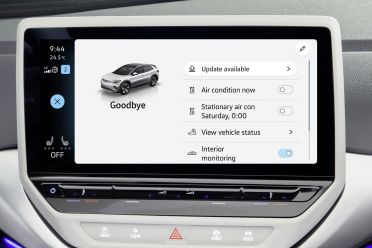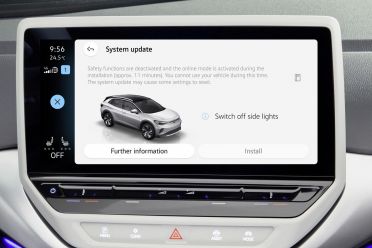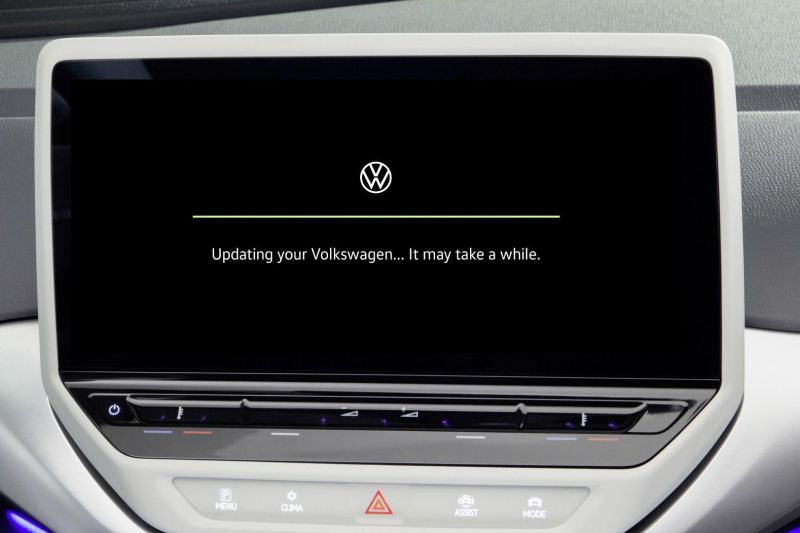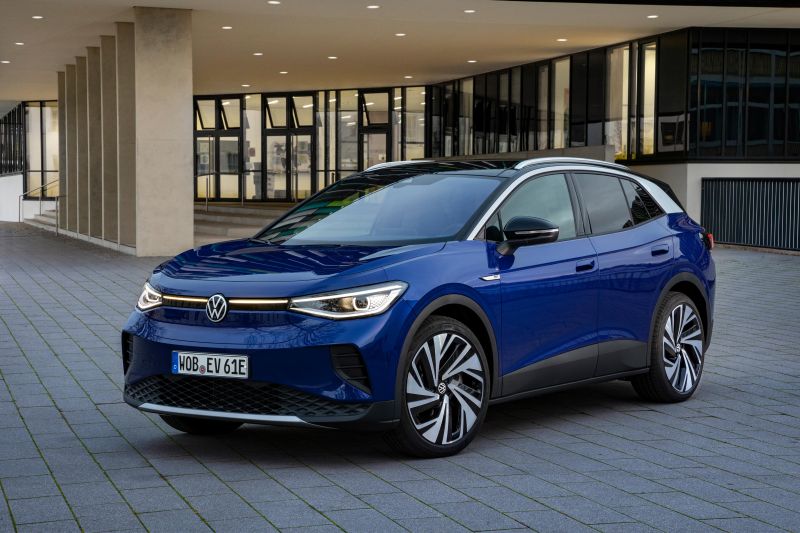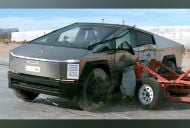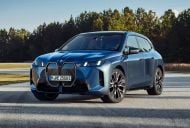Volkswagen has announced it will be bringing over-the-air (OTA) updates to its all-electric ID. models from July, becoming the “first and only high-volume manufacturer to make this technology available on a broad basis”.
In its global media release, the German auto giant detailed its OTA rollout, starting with the ID.3 hatchback later this month, with ID.4 and ID.4 GTX to get their first OTA software updates in the coming months.
The ID.3 will get ‘ID.Software2.3’ via “mobile data transfer” during July – though it’s limited to its First Movers Club customers at first. VW says it’s eventually aiming to update the software in its ID. cars “every 12 weeks”.
Improvements coming to ID. models as part of the OTA updates include “enhanced ID. Light functionalities, optimised surroundings recognition and dynamic main beam control, improved operability and design modifications for the infotainment system, as well as performance and stability improvements”.
Volkswagen’s MEB electric vehicle architecture facilitates OTA updates thanks to the In Car Application Server (ICAS), which is essentially the central high-performance computers in ID. models that take on a variety of functions previously distributed across a host of control units in earlier VW models.
By simplifying the exchange of data and functions, up to 35 control units can be reached and updated via OTA updates.
“Volkswagen is moving up a gear when it comes to digitalisation. After the successful roll-out of our all-electric ID. family, the brand is once again leading the movement: we are creating a totally new, digital customer experience with new functions and greater comfort – every twelve weeks,” said Ralf Brandstätter, CEO of Volkswagen Passenger Cars.
“This makes us the first high-volume manufacturer to regularly deliver extensive Over-the-Air Updates. This is an important milestone in the implementation of our ACCELERATE strategy, which is preparing Volkswagen for the connected, digital mobility of the future.”
Volkswagen says OTA updates helps lay the foundations for future business models per its ACCELERATE strategy.
In the plan, future customers will “no longer need to decide on functions for their car when purchasing the car – or which configuration will make for a higher resale value. This is because the hardware will be standardised to a great extent”.
Instead, additional functions and technologies can be added after sale via software updates. This model has already been employed by companies like Tesla and Jaguar Land Rover.
As for Australia, it could be almost two years minimum before we see Volkswagen offer this sort of functionality locally.
The ID.4 SUV is currently the first of the brand’s new electric vehicles headed to our market, though at this stage not until 2023 due to our nation’a lack of CO2 targets and strong global demand.
Volkswagen Australia also doesn’t currently offer the various connected functions of its infotainment systems seen abroad.
For example, the latest Passat with MIB3 infotainment doesn’t get an integrated eSIM like in Europe, which allows for an array of online services like cashless parking and music streaming. VW is adding to these services abroad, too.
The brand has, however, been very vocal in pushing for a unified approach from Australia’s Federal and State governments to electric vehicles and emissions reductions, given its global parent often pushes it down the priority list for new powertrain technologies.
This has left Australia with some older engines and no electrification options.
MORE: 2021 Volkswagen ID.4 European launch review
MORE: Volkswagen ID.3 and ID.4 Australian launch delayed until 2023

